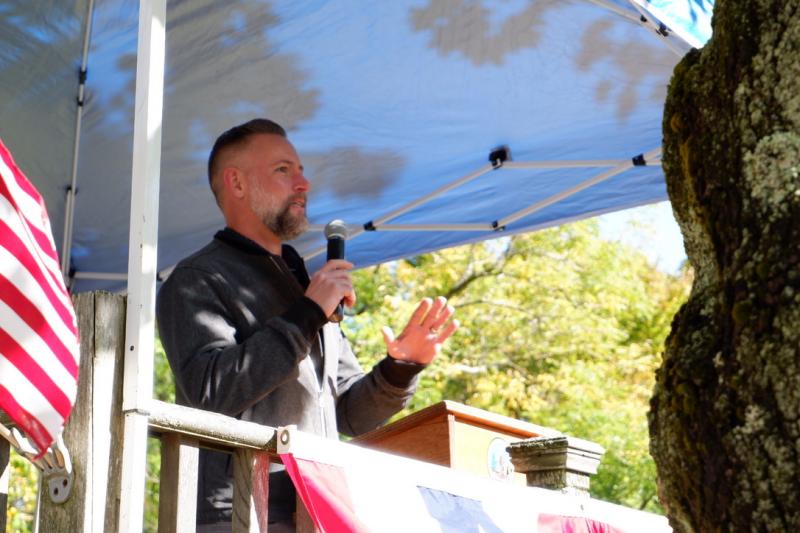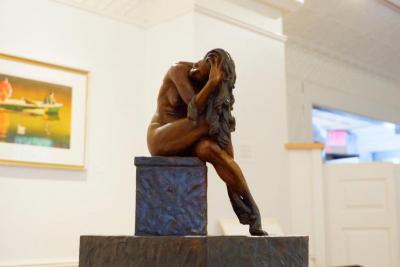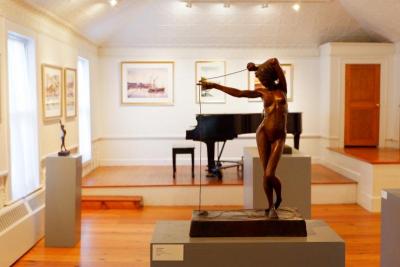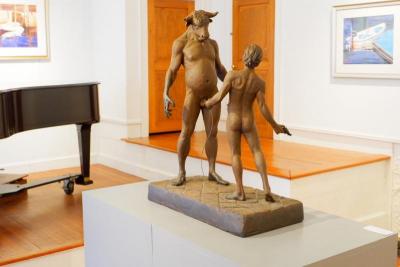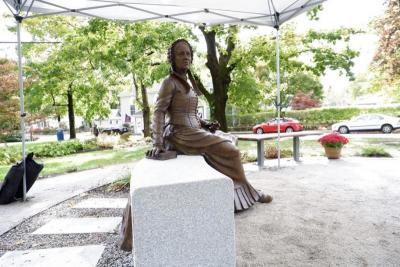Sculptor Erik Durant talks Taber statue, personal works
MARION — With Elizabeth Taber finally sat, unmoving in her graceful gaze at the town she helped build, Sculptor Erik Durant showed off his more personal and “edgy” works across the street at the Marion Art Center on Oct. 17.
Many of Durant’s sculptures were on display alongside paintings by Mike Mazer at an exhibit lasting through Nov. 7.
Durant’s works focus on the human form, emphasizing gesture, movement and pose.
His personal work is “a quest to understand the human condition,” according to a bio on display at the art center.
“Certain artists, I think, are just drawn to certain things,” Durant said. “You can trace back the ‘why’ of things, but only so far. You can ask a baseball player why they play first base, but you can’t really ask them why you play baseball.”
Durant said he’s always been interested in posing figures. When he was younger, he would pose soldier dolls in interesting ways and light smoke bombs behind them for photos.
It’s evident in much of his work, which contorts and twists human bodies in interesting ways.
“Here I am 30, 40 years later, and I’m basically still just arranging people,” Durant said.
But Durant is a lifelong comic book collector, and his work is also heavily focused on telling visual stories.
The works on display at the art center are largely based on Greek mythology.
Durant said that his draw to mythology was in the idea of using allegory to tell stories.
On display in the gallery is a sculpture called “Theseus and the Minotaur,” which depicts a modern version of an old story.
Durant said he doesn’t believe that myths were meant to be interpreted literally. He said he believes that there was no actual maze where Theseus found the Minotaur, but that the maze was Theseus’ mind, and the Minotaur was an inner demon.
“I don’t think that the Greeks thought there were half-human, half-animal beasts running around,” Durant said. “I think that they were using it to explain the unexplainable.”
Durant’s version of the story is a self-portrait, and instead of a sword, Durant’s Theseus holds a gun.
“For me, if I was going into my mind to combat my things, I wouldn’t bring a bronze sword,” Durant said. “I would wrestle around in my father’s drawer, and find an old .38 that’s kind of rusty, and maybe has two shells that might work, but you don’t know because they’re twenty years old.”
He said the Minotaur was also a self-portrait, but meant to be the worst version of himself.
“My Minotaur looks like this guy who was maybe in shape in high school,” Durant said. “And now he’s been sitting on his couch, drinking beer for the past 20 years. He’s still got jacked arms, but he’s got this big old beer belly. He’s just a gross, disgusting version, a perversion, of [Theseus].”
For a statue like Taber, Durant said it was much easier to tell the story because it was already written, with less up for interpretation.
“Elizabeth, she already had a story,” Durant said. “So I was interpreting that story. With the Greek stuff, these are old stories that have been interpreted and misinterpreted over, and over, and over, and over again, so you get to put your spin on them.”
He also said that since the Taber statue is an outdoor work meant to be interacted with, he couldn’t tell her story the same way he tells mythological stories in smaller, more intimate sculptures.
But as Taber sits on her bench, gazing out across Bicentennial Park at Marion, her head turned with book and pipe in hand, Durant’s affinities for storytelling and human poses are clear.



